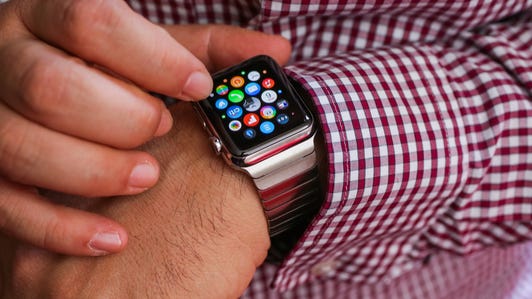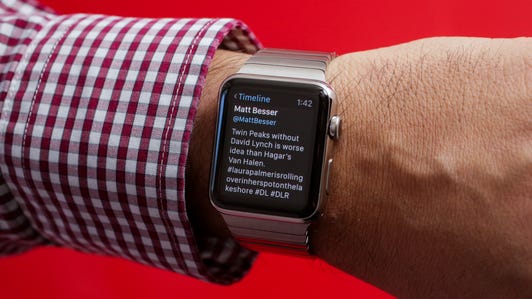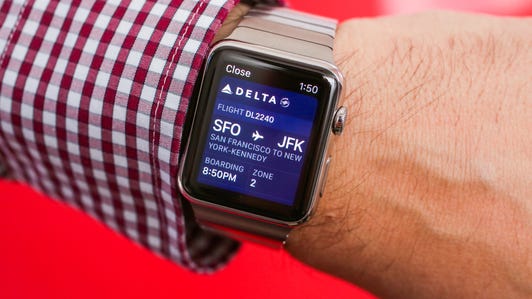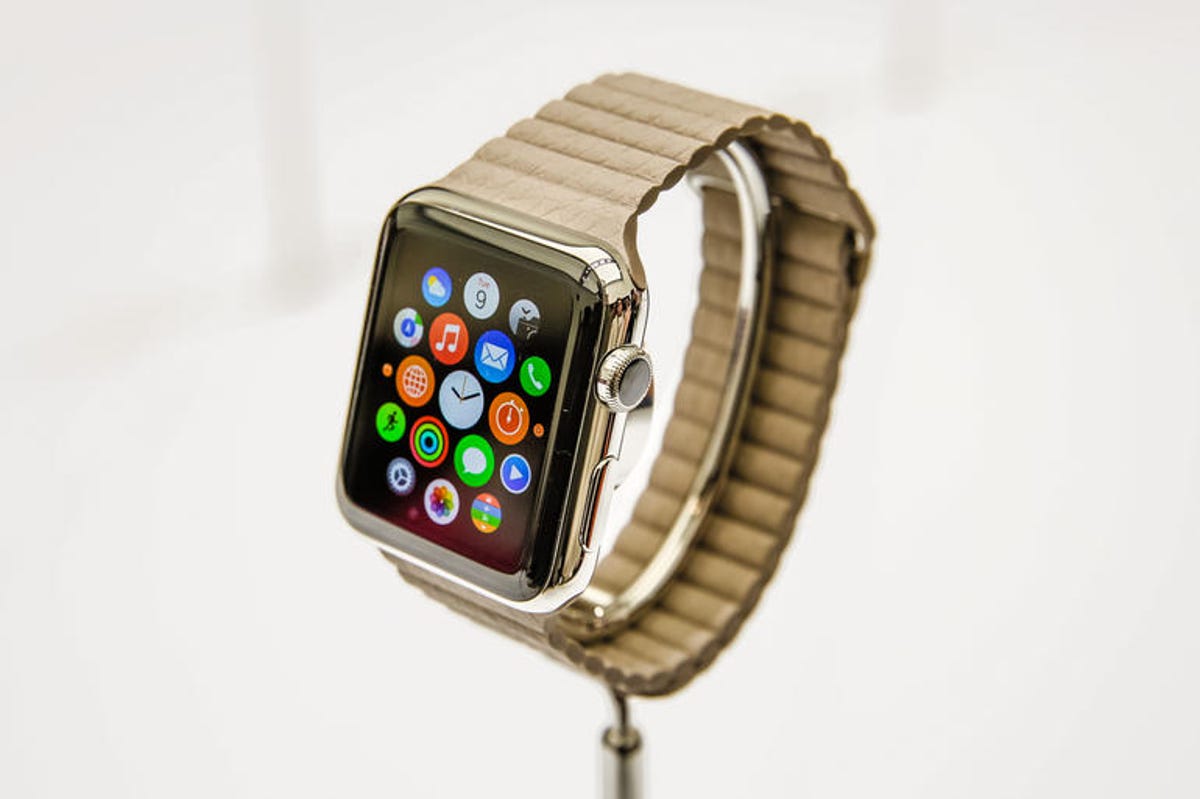
James Martin/CNET
You can now pre-order an Apple Watch, but it’ll be a while before you can actually get one on your wrist.
Apple on Friday started accepting advance orders for its first new product line in five years, a wrist-worn device that’s designed to display notifications and run apps from the iPhone. But as quickly as Apple began accepting early orders ahead of the April 24 release date, some launch day supplies ran out. An hour later, the company’s site indicated new orders of many models wouldn’t ship until the summer.
Among the many variations of the Apple Watch and its accompanying bands, Apple’s US website indicated those colored with black wrist straps, and those with grey cases, were among the first to sell out of initial quantities. Meanwhile, the most expensive Apple Watches, made with gold, indicated they would ship at least a week after other versions. Less than a half hour after the devices went on sale, those shipments slipped to as late as August, depending on the model.
Dave Starling, technology chief at mobile video startup Seenit in London, put his order in for an Apple Watch with a black wrist strap, only to learn he wouldn’t receive his till June. “The delay is not unexpected, so not that annoying,” he said, adding he’s looking forward to not having to pull his phone out to check email while commuting.
It’s hard to gauge how much of the sellout is due to low supplies or high demand. Apple’s ordering website did appear to have some difficulty accepting the first preorders, potentially because of high traffic to Apple’s site. Apple is only allowing customers to buy two watches at a time.
See also
- What an Apple Watch fitting is really like
- Apple Watch buyers allowed to get their hands on two watches
- Apple Watch launch: Plan ahead — it’s by appointment only
- CNET’s take on Apple Watch
- The complete guide to preordering the Apple Watch
Investors and enthusiasts alike are watching closely. The Apple Watch represents CEO Tim Cook’s first step into a new product category and takes the Cupertino, Calif. company beyond the computers and mobile devices that have helped it become the world’s most valuable brand. Cook, and a design team led by Jony Ive, started working on the smartwatch right after the 2011 death of co-founder Steve Jobs, who helped create many of Apple’s most iconic products, including the iMac computer, iPod media player, iPhone smartphone and iPad tablet.
Cook needs the Apple Watch to be a win not because Apple needs the money — sales of the iPhone and iPad account for 81 percent of revenue, and earnings from the devices last quarter helped Apple beat the world record for quarterly profit. Instead, company fans — and critics — are looking to how well the Apple Watch does as a sign of whether Cook and his team are still as innovative without Jobs’ influence over product design.
The watch is different from any other device Apple has sold in a few important ways. There are more options to choose from, with stainless steel, aluminum and gold finishes and six watchbands — it’s a more personal, fashion-centric gadget, since it’s worn on the body. Apple also plans to sell its smartwatch differently than its popular iPhones and iPads. Customers won’t be able to walk into a store and buy the device. Instead, all purchases will be made online, with customers able to set appointments at the retail stores for fittings.
Apple Watch: A hands-on tour of Apple’s first smartwatch (pictures)
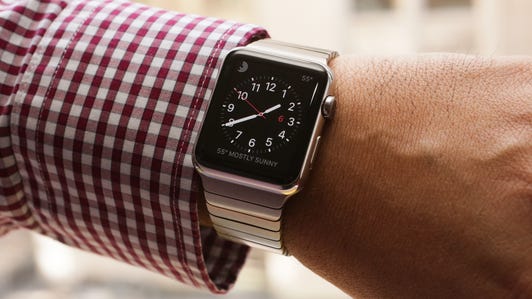

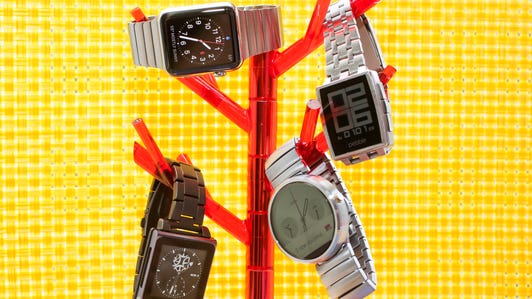

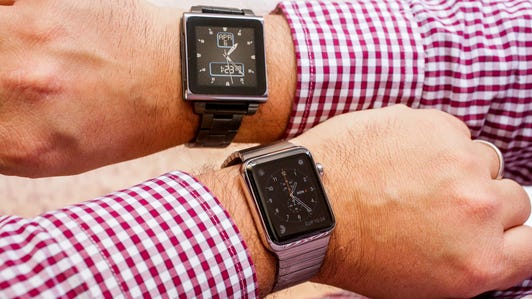

The larger question now in front of Apple is whether customers will actually want it. Gartner expects 40 million smartwatches will be sold this year, quadruple the number it believes were sold last year. The Apple Watch may account for as many as as half the number of smartwatches sold, Gartner said.
Forrester Research predicts that as many as 10 million Apple Watches will be sold this year after its surveys showed that 40 percent of adults in the US are tired of pulling their phones from their pockets. Other analysts have made higher projections, such as Morgan Stanley analyst Katy Huberty estimating that Apple will sell 30 million watches in 2015.
“Skepticism around Apple Watch mirrors [the] low expectations seen ahead of the iPhone and iPad launches,” she said. In both cases, Apple sold many more units than expected — a third more iPhones than anticipated and triple the number of iPads originally estimated by Wall Street analysts.
Apple devices tend to sell out quickly, though the company does limit supply and doesn’t reveal how many products are in its first batch of inventory. The limited number of devices available has prompted Apple fans to wait in line for hours or even days to be among the first to own the latest iPhones and iPads.


Now playing:
Watch this:
Apple Watch launch won’t be like the iPhone’s
2:51
Demand for Apple’s latest smartphones, the iPhone 6 and iPhone 6 Plus, was so high when preorders began on September 12 that Apple’s online store and various carriers couldn’t keep up. Outages plagued the Apple Store site for more than two hours after the iPhones became available for presale at midnight PT. Despite the site glitches, all iPhone 6 Plus models were on a three- to four-week delivery delay within hours, while most iPhone 6 models were pushed back to seven to 10 days. Apple later announced record preorders of more than 4 million iPhones in the first 24 hours.
On Thursday, Apple said it expects Apple Watch demand to outstrip supplies, directing eager customers to order their watch online instead of traveling to more than 400 retail stores in hope of buying one in person. Even if people wanted to stop in stores to buy an Apple Watch, they wouldn’t be allowed. For the foreseeable future, Apple Watch sales are online only.
Apple has also set up appointments for customers to try the device on while in the company’s stores. At one store in Sydney, Australia, the lines were orderly and there appeared to be no confusion. Customers who didn’t have an appointment were offered slots where available.
The device comes in two sizes, three different models, with multiple finishes per model and with a variety of band options, including a Milanese loop of metal mesh with magnets and a classic leather watchband. The entry-level device, the aluminum and glass Apple Watch Sport with a plastic band, is priced starting at $349 in the US, £299 in the UK and AU$499 in Australia.
The midrange Apple Watch ranges from $549 to $1,099. The premium gold Apple Watch Edition, available in 18-karat yellow or rose gold, starts at $10,000 and sells for as much as $17,000. Apple also revealed prices for its AppleCare+ service and repair coverage, ranging from $49 for the Apple Watch Sport to $1,500 for the Apple Watch Edition.
Apple Watch apps: The first wave (pictures)
